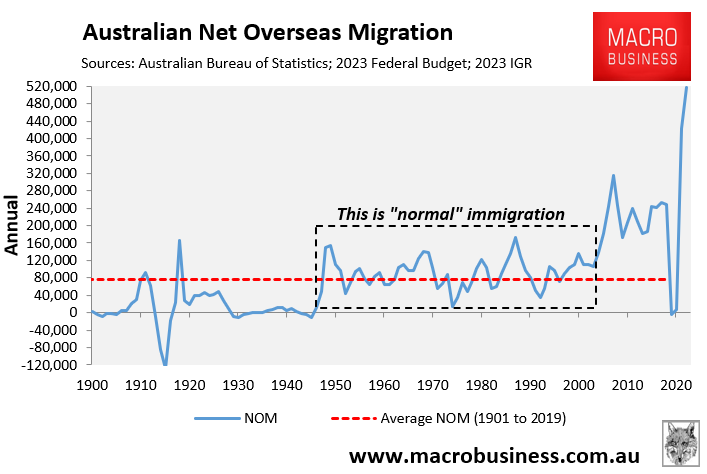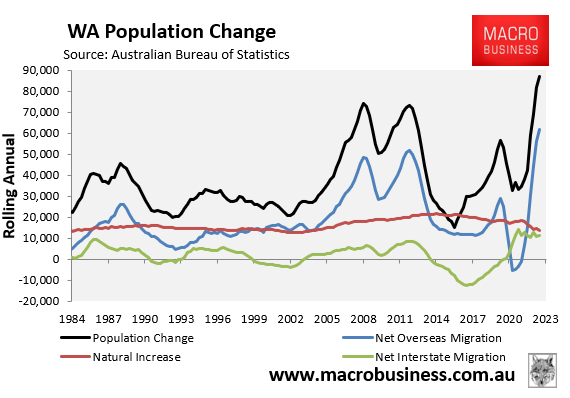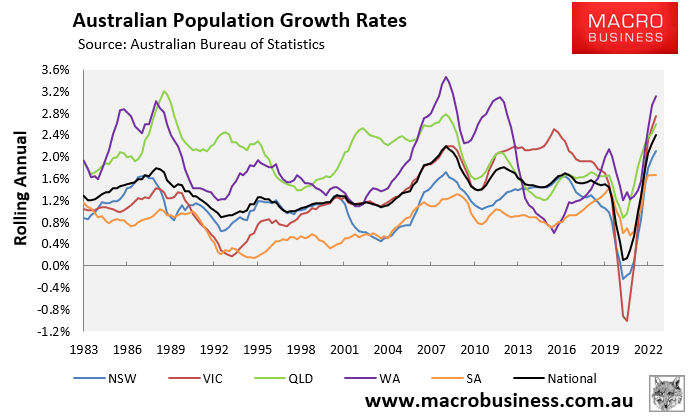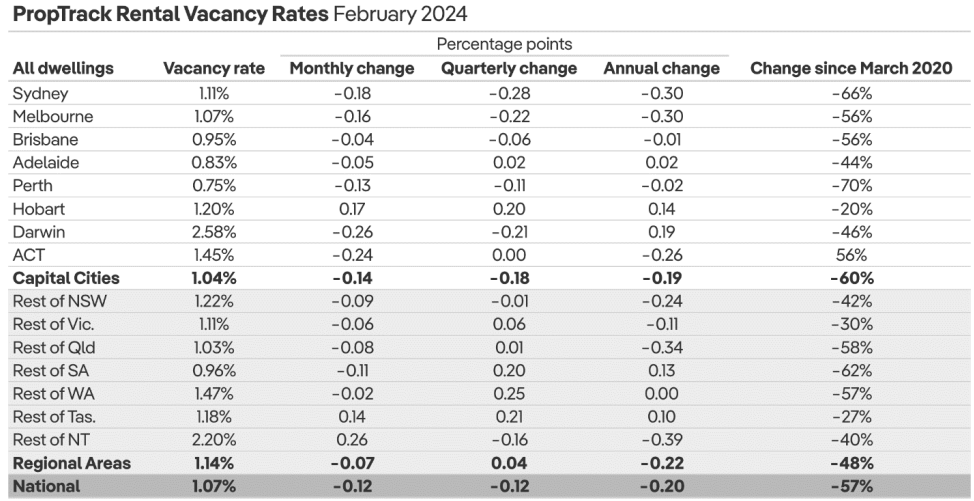I was interviewed by Gary Adshead at Perth Radio 6PR discussing Perth’s worsening rental crisis, which is being driven by extreme levels of immigration.
Below are key highlights with supporting data.
Gary Adshead:
There is an absolute crisis in housing and rental accommodation in this country right now. WA is struggling, absolutely struggling, to keep up with the demand.
So then you say to yourself: “Why would the federal government not have done something drastic in terms of the numbers of people that are coming into the country”?
The migration levels are not going back, as Anthony Albanese said last year.
Leith, where the hell are they all living?
Leith van Onselen:
In 2022-23, the nation added 518,000 net overseas migrants and that lifted the population by 624,000.

We were told by the Albanese government that they were going to try to cut the numbers. But unfortunately, over the second half of the year and January, the numbers have just kept rising.
The national accounts for the fourth quarter from the Australian Bureau of Statistics estimated that Australia’s population grew by 680,000 last calendar year. That is one and a half Canberra’s.

The data showed that migration increased even further in January, so the population keeps going up, and this is obviously driven by immigration.
The sad thing is that Western Australia is actually copping it the hardest, would you believe.
You are not getting the highest numbers in terms of migration, but as a percentage of your population, Western Australia is getting the largest net overseas migration.

Your population growth was 3.1% last financial year and you got immigration of 2.1% of your population in a single, which is just extraordinary numbers:

Here is why Western Australia, and also the rest of the country, is experiencing an extreme rental crisis.
According to the Australian Bureau of Statistics, Western Australia added only 13,200 homes last financial year—that’s once you account for demolitions. That’s against a population increase of 87,000, 61,600 of which was from net overseas migration.
So, WA only added one home per 6.6 new residents last financial year. That is the reason why Western Australia has the lowest rental vacancy rate in the nation, according to data released by PropTrack.

Perth’s rental vacancy rate was just 0.75% in February versus 1% across the combined capitals, which is also record low.
That is why Western Australians are struggling to find rental housing, why people have been forced to live in group housing, why some are becoming homeless, and why rental inflation is running through the roof.
It is basically because the number of renters that the nation and Western Australia are importing through immigration is far greater than homes that can be built.
I think the question that all Western Australians and Australians more generally need to ask the Albanese government: is, “why are you importing record numbers of people without a plan to house them and without a plan to provide infrastructure for them”?
The way this is turning out, the federal government has created the worst rental crisis in generations through its reckless immigration.
Gary Adshead:
This reminds me of conversations that you have with people who are in their 20s, saying: “how on Earth am I ever going to find somewhere to rent or buy because there is no end in sight to the sort of pressures on the market”?
Leith van Onselen:
Unfortunately, if you’re a young person and you want to try and save for a house, you’re paying more in rental costs. So, that’s obviously destroying your ability to save.
Then, property prices are surging because there’s so much excess demand over supply. So, the target just keeps moving further away and you can’t save money quickly enough for a home deposit to to catch up with home prices.

